A TOUCH OF
FARMHOUSE CHARM
Easy DIY Projects to Add a Warm and Rustic Feel to Any Room
Liz Fourez
creator of Love Grows Wild
The author and publisher have provided this e-book to you for your personal use only. You may not make this e-book publicly available in any way.
Copyright infringement is against the law. If you believe the copy of this e-book you are reading infringes on the authors copyright, please notify the publisher at: http://us.macmillanusa.com/piracy.
 To the three amazing people I get to share this beautiful home and life withJeremy, Alec and Wyatt
To the three amazing people I get to share this beautiful home and life withJeremy, Alec and Wyatt Hello, sweet friends, and welcome to our farmhouse. My husband, Jeremy, and I moved into this small Indiana home about four years ago with our two sweet boys, Alec and Wyatt, and we have been renovating room by room ever since.
Together as a family we have torn down walls, built furniture, painted every surface and restored the original charm of our 1940s farmhouse. I think what I love most about old farmhouses is their character and the sense of history you get from them. Farmhouses were built with practical materials, and the furnishings were simple, unpretentious and collected over time. The builders used what was available to them and let nature inspire the design. Decorating with farmhouse style today is all about blending modern amenities with elements that take you back to a simpler time. In a modern farmhouse kitchen, you might find an antique table and apron sink mixed with new white cabinetry and stainless-steel appliances.
The rooms in a modern farmhouse should feel cozy, warm, inviting and full of charm and character. Natural wood tones connect the home to the outdoors, and soft, neutral colors create a sense of calm and relaxation. Combining antiques and flea-market finds with new furniture produces a look that has evolved over time. Weathered wood, peeling paint, natural fabrics and simple, clean lines are all hallmarks of classic farmhouse style. Ive developed a huge passion for old farmhouses over the last four years and have come up with 70 easy ways you can add a touch of farmhouse charm in your own home. This book will show you everything from adding farmhouse-style details to your trim and doors to handmade, personalized dcor full of vintage charm.
Ill also share some simple storage solutions to organize your space and my favorite paint techniques for aging furniture. What makes this book really special is that you will not only learn how to make all these projects, but you will also get to see how I use them to decorate our home. Ill take you on a room-by-room tour of our little farmhouse and show you how we renovated and decorated each space to turn it into the home weve always dreamed of. My hope for this book is that you learn new skills and decorating ideas that will open up endless possibilities for your home and that you will be inspired to create a place that is warm, cozy and inviting for you and your family to enjoy. Home is all about the memories you make there together, and as Im writing this I have flashbacks of dancing barefoot in the kitchen with my husband, giving my babies bubble baths in the bathtub, having family gathered around the dining room table for holidays and snuggling together on the couch watching our favorite movies.  Im so grateful that you picked up this book and cannot wait for you to start creating your dream home.
Im so grateful that you picked up this book and cannot wait for you to start creating your dream home.
You can keep in touch with me through my blog, lovegrowswild.com, and please share your home and project photos with me on social media! As Dorothy would say, Theres no place like home. Lets start creating yours. xoxo Liz

Whether you are new to decorating and creating projects or a seasoned expert, there are a handful of items that will be helpful to have before getting started. Dont feel like you have to go out and buy everything all at once, but as you go through the book, add to your tool collection as your skill and comfort levels increase. HERES WHAT I KEEP IN MY TOOLBOX:
Angled paintbrushBrad nail gunCircular sawDrill with various size bitsElectronic cutting machineHammerJigsawLevelMetal snipsMiter sawPainters tapePaste waxPliersPocket-hole jigSanding block or sandpaperScrewdriverScrews and nails in various sizesStaple gun and staplesTape measureWall anchorsWhite paintWood glueWood stain Most of the projects in this book are simple and dont require many tools, but some of them do call for things like a miter saw, pocket-hole jig or brad nail gun that you may not be familiar with. HELPFUL TIPS FOR USING THESE TOOLS SawsI use a few different types of saws in this book, and each one has a different purpose.
A miter saw is great for cutting lumber and also allows you to cut on an angle. But the blade only cuts up to an 8- or 10-inch (20.5- or 25.5-cm) board, depending on the model you have. A circular saw is smaller and more portable than a miter saw, and I often use this one to cut big sheets of plywood that the miter saw cannot cut. When I need to make detailed cuts or rounded edges, I use a jigsaw. If you dont have access to a miter saw or circular saw, most home improvement stores will cut materials for you for a small fee. Just make sure to bring a list with you of all the cuts you need.
Brad nail gunThis tool saves a ton of time and effort when you need to use nails on a project. You load the brad nails into the gun, and it shoots the nails into the wood for you, increasing your accuracy and speed. The nail gun I have is battery powered, but you can also purchase nail guns powered by an air compressor. If you work on home projects often, I highly recommend investing in one, but any project that calls for a brad nail gun in this book can be completed using a good old-fashioned hammer and nails as well. Pocket-hole jigThis tool allows you to drill holes into wood at an angle, creating a pocket for a screw. You can then connect two pieces of wood together with that screw, creating a super-strong joint and hiding the screws neatly inside the pockets.
Once I started building more complex furniture projects, I decided to invest in a pocket-hole jig, and it makes woodworking go so much faster. I personally use the Kreg Jig brand, and it comes with great instructions for learning how to use this tool. There are also many resources online you can use as well. If you do not have this tool, you can modify the projects by eliminating the pocket holes and drilling a screw straight into the wood. You will be able to see the screw heads, but you can paint over them or cover them with wood filler. Electronic cutting machineThis is similar to a printer that plugs into your computer, but instead of printing, it has a small blade that cuts designs into paper, vinyl, fabric and more.

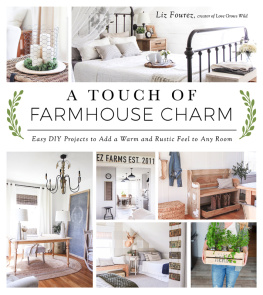

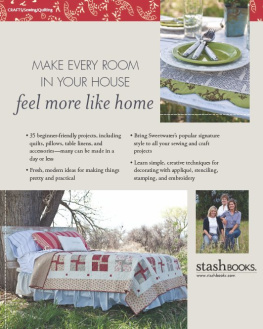
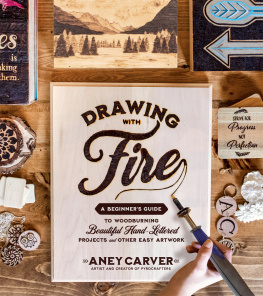
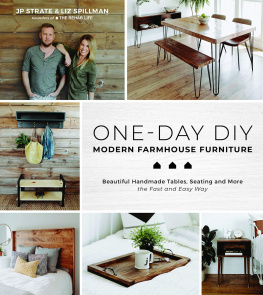

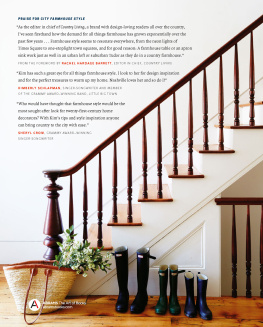
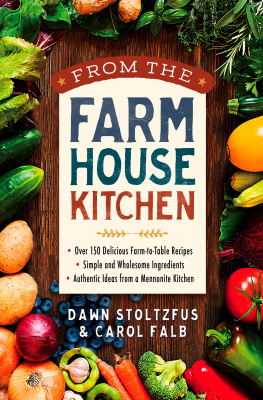
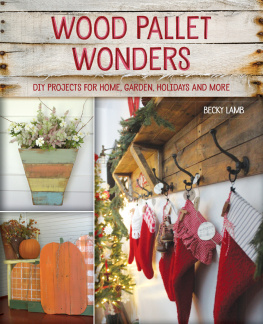
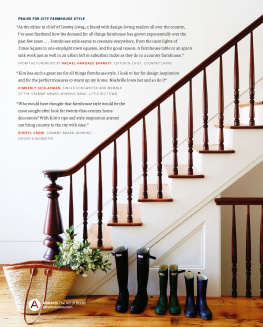
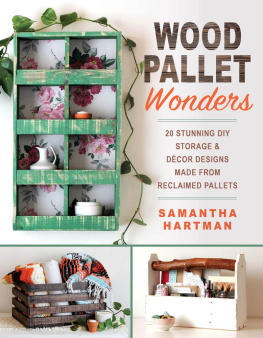

 The author and publisher have provided this e-book to you for your personal use only. You may not make this e-book publicly available in any way. Copyright infringement is against the law. If you believe the copy of this e-book you are reading infringes on the authors copyright, please notify the publisher at: http://us.macmillanusa.com/piracy.
The author and publisher have provided this e-book to you for your personal use only. You may not make this e-book publicly available in any way. Copyright infringement is against the law. If you believe the copy of this e-book you are reading infringes on the authors copyright, please notify the publisher at: http://us.macmillanusa.com/piracy.  To the three amazing people I get to share this beautiful home and life withJeremy, Alec and Wyatt Hello, sweet friends, and welcome to our farmhouse. My husband, Jeremy, and I moved into this small Indiana home about four years ago with our two sweet boys, Alec and Wyatt, and we have been renovating room by room ever since.
To the three amazing people I get to share this beautiful home and life withJeremy, Alec and Wyatt Hello, sweet friends, and welcome to our farmhouse. My husband, Jeremy, and I moved into this small Indiana home about four years ago with our two sweet boys, Alec and Wyatt, and we have been renovating room by room ever since.  Im so grateful that you picked up this book and cannot wait for you to start creating your dream home.
Im so grateful that you picked up this book and cannot wait for you to start creating your dream home. Whether you are new to decorating and creating projects or a seasoned expert, there are a handful of items that will be helpful to have before getting started. Dont feel like you have to go out and buy everything all at once, but as you go through the book, add to your tool collection as your skill and comfort levels increase. HERES WHAT I KEEP IN MY TOOLBOX: Angled paintbrushBrad nail gunCircular sawDrill with various size bitsElectronic cutting machineHammerJigsawLevelMetal snipsMiter sawPainters tapePaste waxPliersPocket-hole jigSanding block or sandpaperScrewdriverScrews and nails in various sizesStaple gun and staplesTape measureWall anchorsWhite paintWood glueWood stain Most of the projects in this book are simple and dont require many tools, but some of them do call for things like a miter saw, pocket-hole jig or brad nail gun that you may not be familiar with. HELPFUL TIPS FOR USING THESE TOOLS SawsI use a few different types of saws in this book, and each one has a different purpose.
Whether you are new to decorating and creating projects or a seasoned expert, there are a handful of items that will be helpful to have before getting started. Dont feel like you have to go out and buy everything all at once, but as you go through the book, add to your tool collection as your skill and comfort levels increase. HERES WHAT I KEEP IN MY TOOLBOX: Angled paintbrushBrad nail gunCircular sawDrill with various size bitsElectronic cutting machineHammerJigsawLevelMetal snipsMiter sawPainters tapePaste waxPliersPocket-hole jigSanding block or sandpaperScrewdriverScrews and nails in various sizesStaple gun and staplesTape measureWall anchorsWhite paintWood glueWood stain Most of the projects in this book are simple and dont require many tools, but some of them do call for things like a miter saw, pocket-hole jig or brad nail gun that you may not be familiar with. HELPFUL TIPS FOR USING THESE TOOLS SawsI use a few different types of saws in this book, and each one has a different purpose.